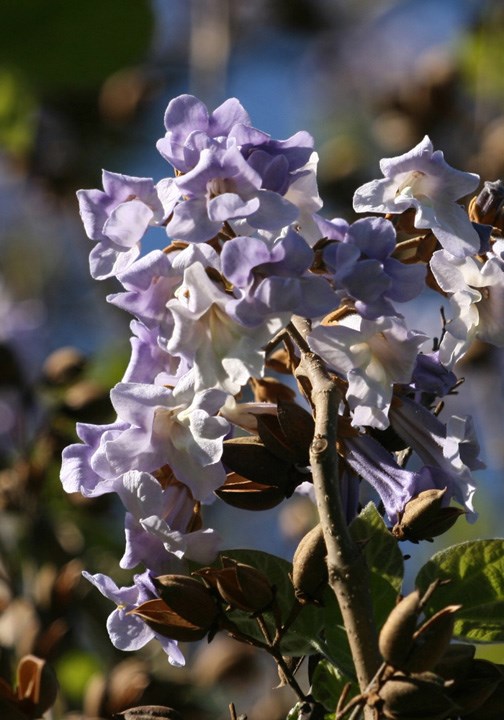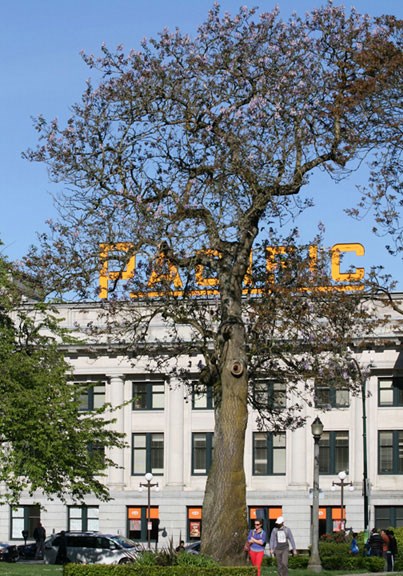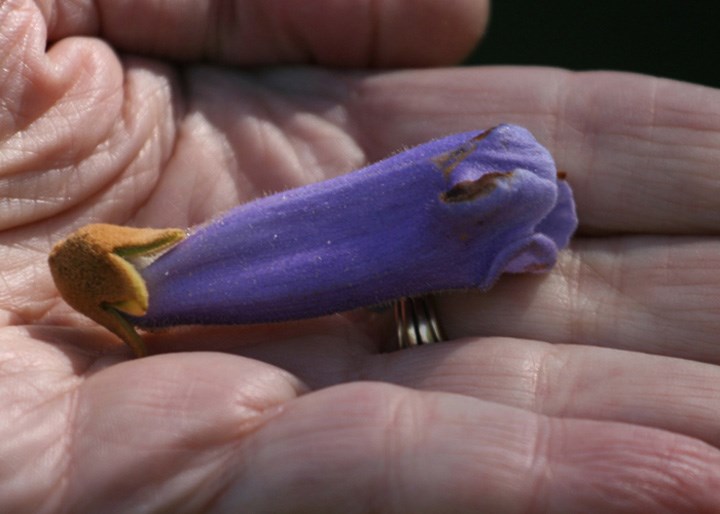David Tracey is a writer, designer and community ecologist specializing in trees. He is the author of six books including the new Vancouver Tree Book.
Tree of the Month - Paulownia - Paulownia tomentosa
Sometime this Friday, May 6, will mark seven hours and 15 days since Prince took his love away. (If this reference is baffling listen again to Nothing Compares 2 U.)
If you needed a place to quietly reflect on the strange beauty and sadness of Prince Rogers Nelson’s purple reign over our culture, try a paulownia tree. There’s one in front of Pacific Railway Station on Main Street at Terminal Ave. Also the free access area at Sun Yat-Sen Garden on Keefer St. has several.
Paulownia trees bloom in late April-early May. The fragrant, lavender-purple flowers emerge before the leaves, in some years creating a spectacular show that seems like something that belongs in the tropics.
Also known as the empress tree, princess tree, royal paulownia or the foxglove tree, the origins of the paulownia are in China. They’re valued in Japan as rapid-growing wonders producing light yet very hard wood. Tradition held that parents of a baby girl would plant a paulownia (known as kiri), and by the time she was to be married the tree would be large enough to provide wood for her dowry chest.

The name has royal implications dating back to 19th Century Russia when Anna Pavlovna was daughter to the Czar Paul I – in other words, a real princess. She turned down a number of suitors, including Napoleon, to marry the Prince of Orange who became King William II of the Netherlands. The Dutch version of her name renders closer to the tree we now call paulownia.
In spring, in bloom, it isn’t hard to understand how a paulownia could earn a reference to regal splendor. But like royalty everywhere, if you closely it isn’t hard to spot the blemishes.
In other parts of North America, paulownia is treated as a noxious weed that will replant itself with abandon. With one large tree producing up to 20 million seeds, it adds up to a problem.

Then there is the almost freakish rapid growth rate, towering over a house in two or three with new leaves emerging as large as car tires. It’s like a sometimes-beautiful princess that suffers some weird form of gigantism. She’s also messy. Paulownia trees need frequent cleaning-up underneath to keep the ground free of brittle twigs and seed pods.
But in our area they’ve never taken over the way they do back east, maybe because our winters are a bit too chilly or our summers too dry. You can see them sprout in unexpected areas like back lanes, but the young trees don’t survive in numbers large enough to cause invasive species watchers here to lose sleep.
They’re too big for most people to want one in the yard, but they make a grand park tree. Once a year, they put out a display of such transcendent beauty the memory can linger the rest of the year when they may not be so lovely. Like many fast-growing tree species, and some rock stars, they pack all their living into a relatively brief life span. Let’s enjoy them while we can.


